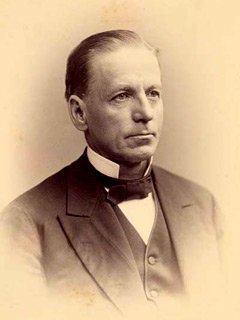Edward Hicks Magill
1871–1889

As a young man, Edward Hicks Magill (1825–1907) wrote in his journal of assisting “self-emancipated slaves” along the Underground Railroad in Bucks County, Pa. Educated at Yale and Brown universities, he joined Swarthmore’s faculty when it opened in 1869 and continued to hold teaching positions while president, including professor of mental and moral philosophy.
Under Magill, Swarthmore moved further into the mainstream of American collegiate education. He upgraded the quality of the academic courses, worked to phase out the College’s preparatory school, and began the practice of awarding honorary degrees. A strong advocate of coeduation, he said in 1873, “Nothing short of co-equal, coeducational advantages and the same degrees conferred upon both sexes for equal attainments will meet the demands of the times.”
At his inauguration, Magill extolled the virtues of Swarthmore's “optional” system, which provided general academic development with the opportunity to specialize in upper-level courses. By the time he stepped down, Swarthmore offered four degree paths: a bachelor of arts focusing on the classics; a bachelor of letters focusing on modern languages and literature; a bachelor of science; and a bachelor of science in engineering. Swarthmore’s first observatory was erected during his tenure.
Magill also believed in strict discipline and the Quaker principles of a guarded education. In response to the Board of Managers’ desire for a stricter code of conduct to govern students, he issued his “100 Rules” in 1883. Among them:
- “Students are permitted to go into the library only when accompanied by a teacher.”
- “Students of the two sexes, except brothers and sisters, shall not walk together on the grounds of the College, nor in the neighborhood, nor to or from the railroad station or the skating grounds. They shall not coast upon the same sled.”


